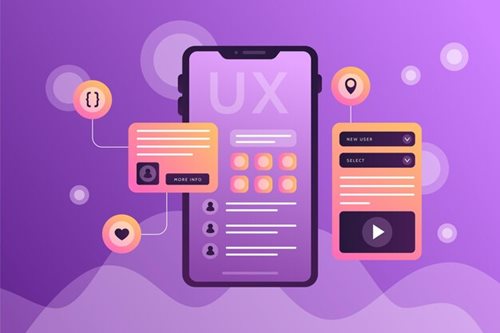Get your free consultation today!
Share with your Colleagues
Categories
ROI Calculator
Moonstone Interactive is the only San Francisco Bay Area web design firm and Internet Marketing expert that offers a free online ROI Calculator
Author: Jason Herz

UI (User Interface), GUI (Graphical User Interface), and UX (User Experience) are related to designing and developing software applications, but they have different meanings and goals. In this article, we'll remind you what UI, GUI, and UX are and show their differences. Our work with clients emphasizes a complementary approach, using all three in developing websites or mobile applications. A friendly interface will convert visitors.
What does UI mean?
UI, or user interface, is critical to any website design. It refers to how a website presents itself visually to its users, including the layout, colors, fonts, images, and other design elements. A well-designed UI can significantly enhance the user experience, making it easy and intuitive for users to navigate a website and find the needed information.
One of the primary goals of UI design is to create a visually appealing and easy-to-use interface that enables users to quickly and easily interact with a website. This goal means that designers need to consider the needs and preferences of the website's target audience and the overall goals of the website to create an interface that is both functional and aesthetically pleasing.
The critical key factor to consider when designing a website's UI usability refers to how easy it is for users to navigate the website and find the information they need. A well-designed UI will make it easy for users to quickly find what they want, whether a specific product, piece of information, or contact form.
Another important factor is accessibility, which refers to how easy it is for users with disabilities to use the website. Designing accessibility should deliver easy-to-read and navigate components, using larger fonts and high-contrast colors or providing alternative navigation options for users who cannot use a mouse or keyboard.
In addition to usability and accessibility, a well-designed UI should also be visually appealing, reflecting the overall style and branding of the website. Effective UI design may involve choosing a color scheme that complements the website's logo and branding, selecting fonts that are easy to read, and incorporating high-quality images and graphics that help to reinforce the website's message and values.
What does GUI mean?
Graphical user interface (GUI) refers to a website's visual components and design elements that facilitate interaction between the user and the site. A well-designed GUI can significantly enhance the user experience, making it easy and intuitive for users to navigate the site and find the necessary information. GUI design is a crucial aspect of website development, as it can significantly impact user engagement, conversion rates, and, ultimately, the website's success.
GUI design has come a long way since the early days of computing, where command lines were the norm. Today, designers focus on creating visually appealing, user-friendly, and intuitive interfaces. A well-designed GUI is the key to achieving this.
One of the primary benefits of GUI design is that it enables users to interact with a website naturally and intuitively. Thus, users can use the site effectively without specialized knowledge or technical skills. They can simply click buttons, select options from menus, and interact with visual elements in a way that is familiar and easy to understand. Websites can increase user engagement, reduce bounce rates, and drive conversions.
And what is UX?
User Experience (UX) refers to a user's overall experience when interacting with the software. It includes all aspects of the interaction, including usability, accessibility, and desirability. UX design aims to create a positive and satisfying user experience by understanding their needs and preferences and designing the software accordingly. In summary, UI and GUI are related to the visual aspects of software, while UX is related to the overall user experience, including usability, accessibility, and emotional response.
Let's talk about the differences: UI vs. GUI vs. UX.
GUI, UI, and UX are three essential components of modern website design. While each is unique, they all play a crucial role in delivering a successful user experience.
GUI (Graphical User Interface)
- GUI refers to the visual elements of a website that users interact with, such as buttons, icons, and menus.
- It focuses on the design of the interface and how users navigate through the website.
- A well-designed GUI can improve the user experience and make the website more intuitive and user-friendly.
UI (User Interface)
- UI refers to the overall design of a website, including the layout, colors, fonts, and other visual elements.
- It aims to create a visually appealing, cohesive design that reflects the brand's values and style.
- A well-designed UI can enhance the user experience by creating a sense of consistency and familiarity throughout the website.
UX (User Experience)
- UX refers to a user's overall experience while interacting with a website, including how easy it is to use, how quickly it loads, and how it makes the user feel.
- It considers the user's emotions, needs, and goals and aims to create a positive and meaningful experience.
- A well-designed UX can increase user satisfaction, loyalty, and engagement with the website.
Contact us, and we will show you how we combine all three ways for your business!


